While I sipped coffee and munched on a croissant, a supervisor approached me. I had just finished performing ‘Funny You Don’t Look Crazy’ (my story of mental illness and return to work) for a quiet but wonderfully engaged group of managers at a breakfast training event.
He confessed one of the biggest barriers he, the managers and staff face is being comfortable talking about mental health at the company. “We know how to discuss physical illnesses, but mental health issues? Not really.” It’s one of the most common remarks I hear. We don’t have an accepted vernacular and we’re not practiced at it.
Silence kills
This discomfort can lead people to say nothing, ranging from not intervening when they see someone in distress or not speaking up when they need help for themselves. Enter the deadly (literally) silence.
Results from a University of Oxford study found leaving serious mental illness untreated can shorten an individual’s life by as many as 10 to 20 years, similar to the mortality risk of tobacco smokers. 1
I started performing my one person shows about my experience with bipolar disorder and recovery back in 2001. At that time, other than Margot Kidder and Kay Redfield Jamison, there were few people divulging the personal secret of psychiatric disorder.
Over the last 15 years though, we’ve made good strides in addressing mental health and making it more common place to discuss. We have the “Bell Let’s Talk” campaign, Mental Illness Awareness Week in October and Mental Health Week in May, to name just three.
However, even with these awareness initiatives, the discomfort of discussing mental illness in the office remains, and silence ensues. Silence breeds fear, drives myths and lets stereotypes remain unchallenged. These then reinforce reasons (though unfounded) for individuals who are struggling to refrain from getting help.
Using data collected from close to 500 university staff and students, a 2014 Australian study found the “silence surrounding mental health problems permeates … environment(s) and impacts on help seeking behaviours… (and the) recovery and well-being of affected individuals.” 2
According to another study out of Toronto, silence has negative implications for relationships and productivity in the workplace as well. 3
Programs that raise awareness and aim to reduce stigma are important. But if people’s discomfort of discussing mental illness is never addressed, these campaigns will be of little long term benefit.
4 steps to create comfortable conversations about mental health
Whatever role you hold in your company, the following are 4 strategies to increase your comfort and effectiveness when discussing mental health.
1. Find Company Mental Health Champions. Share Stories. Get Real.
Safe, inclusive and supportive environments will stop the silence on mental health.
Elio Luongo, Chief Executive Officer and senior partner, KPMG in Canada in a Special to The Globe and Mail agrees. How they went about that was a first in corporate Canada.
In 2017, they created the role of Chief Mental Health Officer (CMHO). They enlisted, Denis Trottier, an audit partner who has “lived through clinical depression while maintaining a successful career”. 4
Having an individual willing to disclose their own experience with mental illness and recovery can open up dialogue, change perceptions and create comfort faster than any other kind of educational program. Patrick Corrigan, one of the foremost experts in stigma research, found in study after study, the most effective method to change attitudes about mental health is what’s called contact-based behavioural health anti-stigma interventions. That is, “people with lived experience of mental illness or substance use disorders interact with the public describing their challenges and stories of success.” In fact, this kind of approach is twice as effective as an educational program alone. 5, 6
At Coast Capital Savings, then CEO Lloyd Craig, shared his devastating story of losing his son to suicide. Craig was a pioneer in workplace wellness initiatives and the Credit Union became a model for workplace mental wellness. In a short time, measures they took, which included Craig sharing his story, produced noticeable results. 7
Discomfort around mental health will only dissolve when people see it’s safe to share stories and ask for help. As Luongo puts it, it’s essential “we walk the talk, right from the C-suite level so that our people can be comfortable sharing their stories and talking openly about mental health at the firm.”
2. Be prepared for and accept the uncomfortable feelings.
Like difficult conversations that are…well…difficult. Uncomfortable topics are… well…uncomfortable. Paradoxically, knowing and accepting that something will be uncomfortable can make the experience easier to bear. Two studies out of Denver found accepting (versus avoiding) negative emotions was shown to be associated with reduced levels of anxiety and stress.8 Prior to talking about mental health, assume unpleasant emotions and sensations will rise within you. Your job is only to tolerate them, be mindful of those awkward feelings and continue the discussion. Preparing for them will make the conversation easier.
3. Practice talking about mental health.
Practice brings experience. Experience brings mastery and mastery brings confidence. 9, 10 Be intentional. Start with low risk situations. Take strategic opportunities to discuss mental health in casual conversation in positive terms. The more you do, the easier it will become. For example: decide that for each day over the next week, you will learn something about mental health and share it with others at work or on social media. Or choose to disclose something personal about how you stay mentally healthy. Let people know what you are doing and encourage them to join. Ask people what do they do to stay mentally well.
4. Make it fun and be curious.
This sounds counter intuitive, even improbable, maybe even insensitive. Make mental health fun? Yes. Even though mental illness can be a heavy subject that doesn’t mean learning about it, or creating a supportive environment, has to be. I consider myself to be an mental health icebreaker of sorts. I use a lot of humour as I share my personal experience with anxiety, depression and psychosis. Yes, I’ve managed to find something pretty funny about running down the street naked while in a psychosis – I think flirting with the ambulance guys has something to do with it.
Self-deprecating humour goes a long way to help people feel like they don’t have to walk on eggshells. A lighthearted and respectful approach opens dialogue up as well as people’s hearts and minds. The more serious we are about a subject, the more cautious we are asking questions and the more difficult it is to discuss.
Start simply. Hold short lunch n’ learns that explore well-being, host interactive workshops that offer strategies for mental wellness and self-care. Focusing on mental wellness first, can prime the pump for mental illness topics.
Silence is not golden. Speak up.
Michael Landsberg, former sports host of TSN’s Off the Record , lives with generalized anxiety disorder and depression and is a staunch mental health activist. He says: “When we talk openly, frankly and honestly about mental health, we’re one step closer to healing.” 11
The silence around mental health will only be broken if we take the risk to speak up. Every time we make a decision to talk about it, and not remain quiet, the more healing is possible. This means healthier companies, stronger communities and more vibrant families.
How do you speak up about mental health at your work? Comment below and let me know.
For more Mental Health resources, tips & tools, sign up for my newsletter.
© Victoria Maxwell
References
1. University of Oxford. “Many mental illnesses reduce life expectancy more than heavy smoking.” ScienceDaily. ScienceDaily, 23 May 2014.
2. Curtin University. “The silence of mental health issues within university environments: a quantitative study.”: Archives of pychiatric nursing, Vol: 28, Issue: 5, Page: 339-44 Publication Year: 2014
3. University of Toronto. “Mental Health Issues and Work: Institutional Practices of Silence in a Mental Healthcare Organization” by Sandra Moll; Doctoral Thesis, 2010
4. “Corporate Canada needs to help break the silence on mental health” by Elio Luongo; Special to The Globe and Mail; January 31, 2018
5. Corrigan, P.W. (2012). Where is the evidence supporting public service announcements to eliminate mental illness stigma? Psychiatric Services, 63(1), 79-82.
6. National Academies of Sciences, Engineering, and Medicine. 2016. Ending Discrimination Against People with Mental and Substance Use Disorders: The Evidence for Stigma Change. Washington, DC: The National Academies Press.
7. “Employers Who Are Walking the Walk” by Donna Panitow; Reprinted from “Workplaces” issue of Visions Journal, 2009, 5 (3), p. 29-30
8. Let it be: Accepting negative emotional experiences predicts decreased negative affect and depressive symptoms. Shallcross AJ, Troy AS, Boland M, Mauss IB. Behav Res Ther. 2010 Sep;48(9):921-9. doi: 10.1016/j.brat.2010.05.025. Epub 2010 Jun 1.
9. Conger KJ, Williams ST, Little WM, Masyn KE, Family Research Group B. Development of Mastery during Adolescence: The Role of Family Problem Solving. Journal of health and social behavior. 2009;50(1):99-114.
10. Why a Sense of Mastery is the Key to a Better Confidence? by Evelyn Marinoff
11. Michael Landsberg, quote: https://www.thelavinagency.com/speakers/michael-landsberg

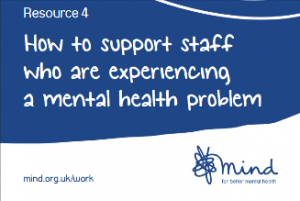 Mind:
Mind: 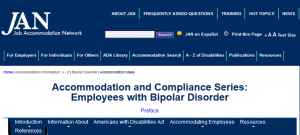 Job Accommodation Network (JAN)
Job Accommodation Network (JAN)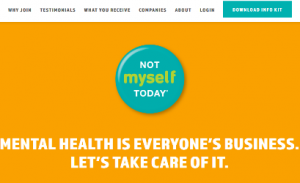 Not Myself Today:
Not Myself Today: 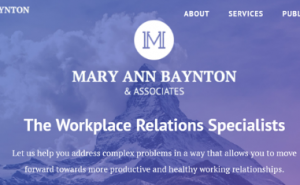
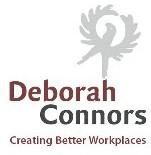
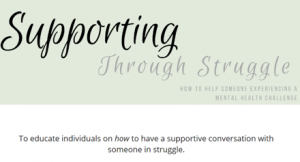 Hayley Peek Consulting:
Hayley Peek Consulting: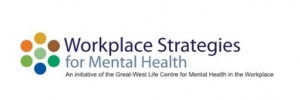 Provides various free resources such as tools, training, strategies, assessments for employers, staff, managers to improve workplace mental health.
Provides various free resources such as tools, training, strategies, assessments for employers, staff, managers to improve workplace mental health. 